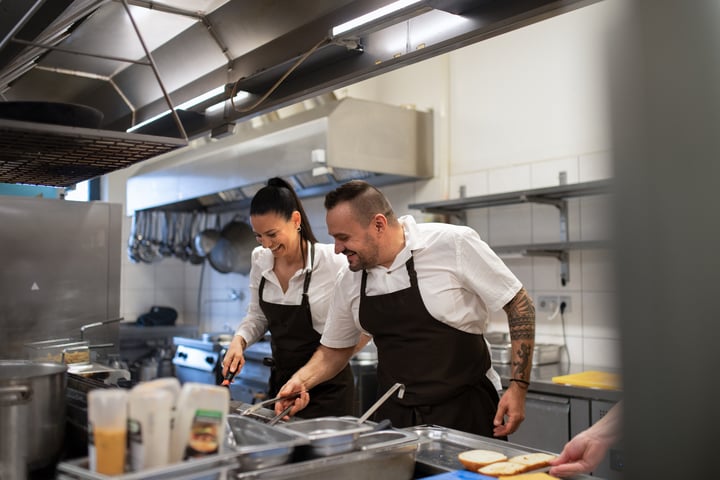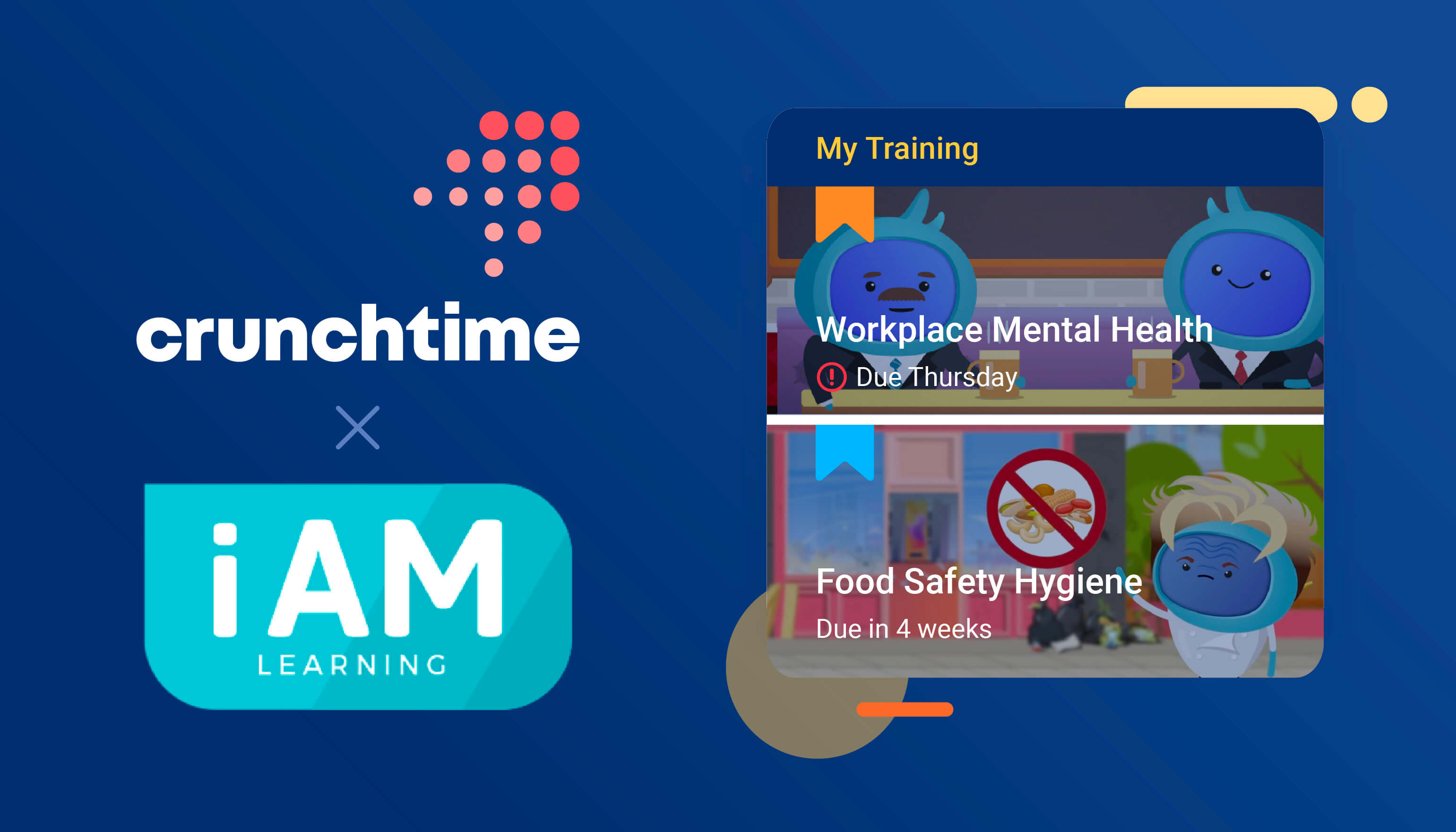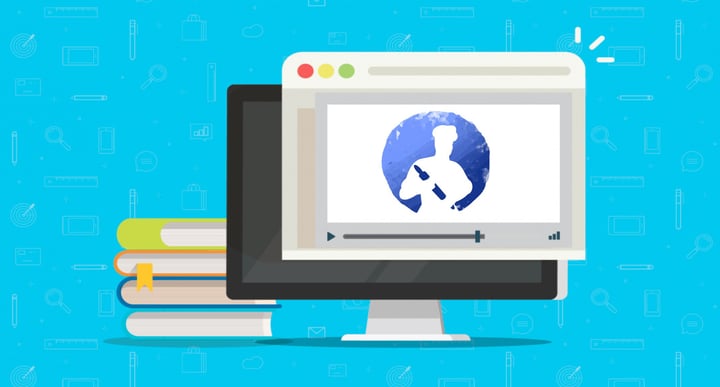
- Home
- Crunchtime Blog
- 5 Ways to Train Food Service Staff with Less Disruption and More Flexibility

5 Ways to Train Food Service Staff with Less Disruption and More Flexibility
How do you onboard and train your hourly staff to ensure top performance, and how do you do it fast? iAM Learning, a Crunchtime Learning & Development partner, knows all about how to train staff in minutes, not hours. We asked them to share five key pointers about how to create and retain top-performing staff.
1) How do you balance high staff turnover with the need for consistent, high-quality training in hospitality roles?
In an industry with historically high turnover, thinking differently about training is what sets top-performing brands apart from the rest.
The key is to have training that’s meaningful to the specific problems you have in your own place of business. Yes, those compliance topics that are a must-have for safety reasons are mandatory, but take a closer look at other areas that frequently arise, particularly when employees leave. And, if you’re not asking them, then perhaps consider starting. This can be a great place to identify areas for improvement that you may not know about.
2) What are the most effective methods for delivering training to a workforce with varied shift patterns and time constraints?
While it would be lovely to say that there was a magic formula, sadly, a one-size-fits-all approach doesn’t exist. Experimenting with different ways of delivering training can be helpful in understanding what works for your brand. Don’t be afraid to try something, retain the elements that work, and then rip up the rest of the plan to try something different.
Finding ways to train staff asynchronously can help minimize the disruption from day-to-day tasks. Creating a rolling program to deliver face-to-face training can help cut back on the disruption as well. When creating or curating a learning library, think about what the outcome you are aiming for is so that the training can be concise and to the point.
Think about creating a culture where learning can take priority. If you have a workplace where your staff know they can fully focus on the training in the moment, that can also help them better retain the learning, which in turn ensures that it’s then implemented when they return to their day-to-day role.
3) How do you ensure soft skills like empathy, communication, and conflict resolution are meaningfully developed in fast-paced hospitality settings?
Soft skills are at the core of every interaction with your customers. How your employees are perceived is the face of the business and how people will judge you.
De-escalation, customer satisfaction, and general support are all elements that can be improved and deployed via the right learning environment. When you’re building soft skills training, look for learning programs that use gamification – it creates a fun, memorable way for employees to learn soft skills. A study published in the Journal of Applied Psychology shows that when gamification is used in learning experiences, retention rates can increase by as much as 90%. Consider creating opportunities to incorporate knowledge checks regularly, too. By incorporating microlearning opportunities into the daily workplace, the overall effect will be that the skills become seamless habits.
4) What challenges do you face when trying to train employees in an industry often reliant on short-term or seasonal staff?
The most common challenge we hear from people in the industry is that they have competing priorities, and training can be at the bottom of those.
One easy way to make training more central to your culture is to set up a “learning station” in the back office. This could be a dedicated space where individuals can access training when needed.
Investing in training seasonal staff might seem time-consuming during busy seasons, but it’s worth it. If your staff feels well-trained and taken care of, it encourages them to return for future stints – and helps you build a happy and well-trained workforce you can rely on.
5) How can you measure the real-world impact of training in hospitality settings?
As with everything in business, understanding the return on investment is an important part of training. While completion rates are helpful, consider using metrics that can prove a valuable link to the behavior you are trying to change. For example, if you notice that customer complaints have decreased after launching a series on customer service, that can be a significant ROI. Likewise, if you are asking teams for feedback about what they need, getting qualitative feedback on how the training has helped them can be just as insightful in understanding how your training programs are being perceived.
Training is critical to building and retaining top-performing food service staff.
To learn more and explore courses from the iAM Learning X Crunchtime partnership, visit Crunchtime Learning & Development page.
Share this post
Related


How eLearning Will Help Restaurants Ramp-up Training After the Pandemic


